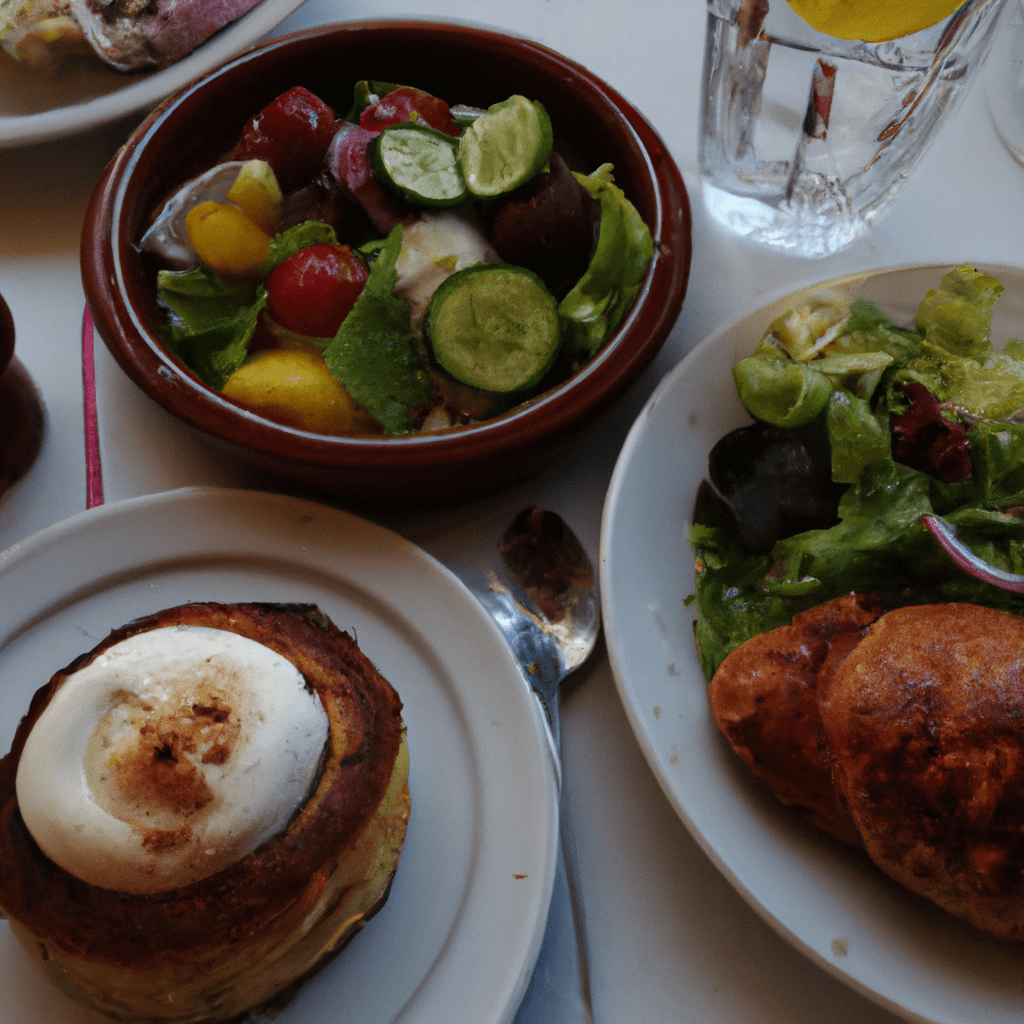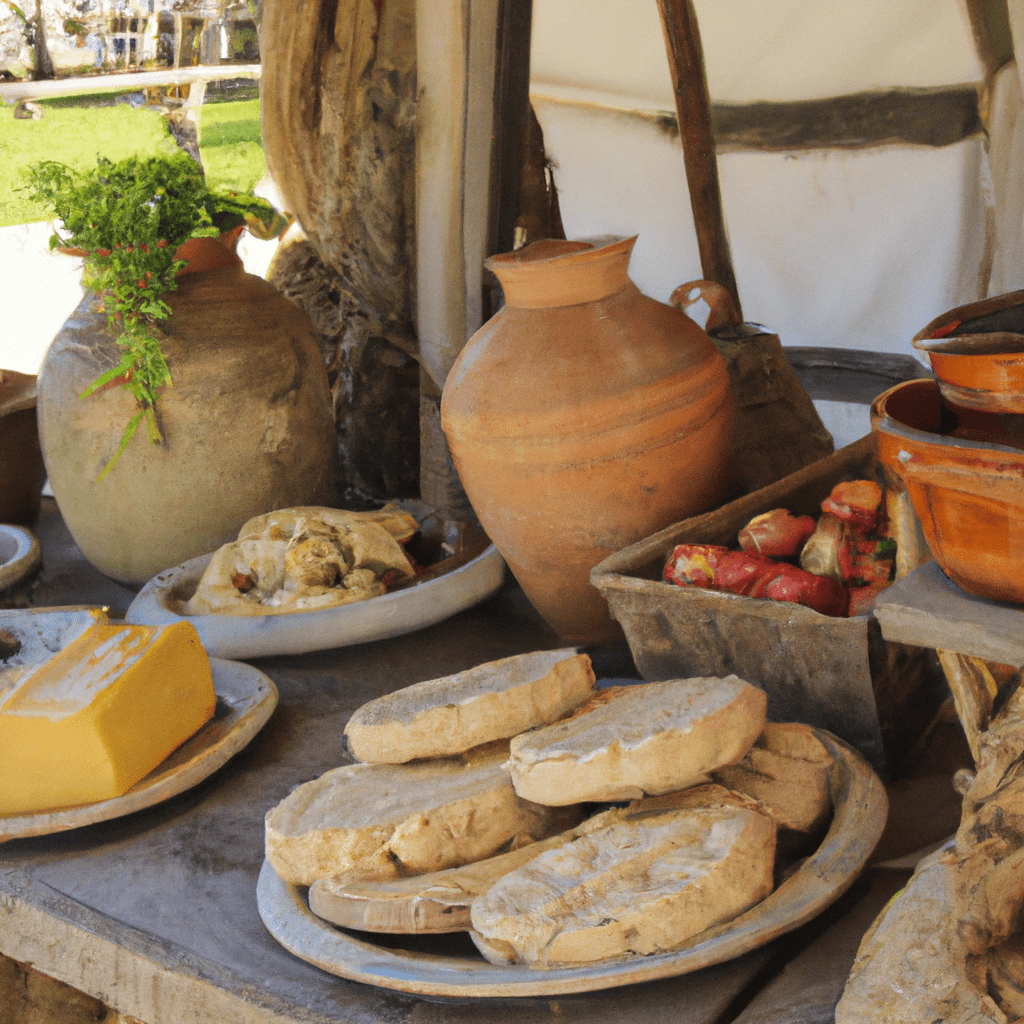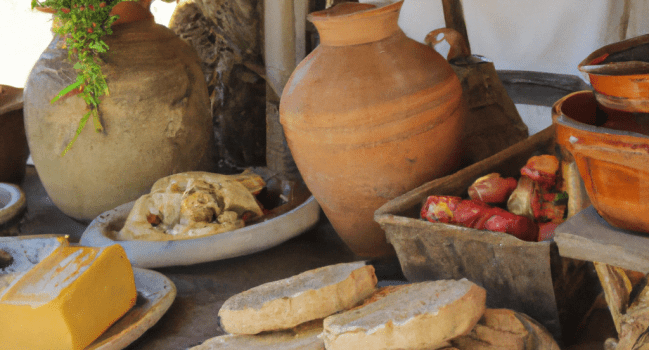Introduction
Funen, the second largest island in Denmark, is known for its rich food culture. From traditional Danish dishes to modern fusion cuisine, Funen has something for everyone. The island is home to a variety of restaurants, cafes, and markets that offer a wide range of local and international dishes. Funen is also known for its abundance of fresh seafood, which is often served in traditional Danish dishes such as smørrebrød and frikadeller. Additionally, Funen is home to a number of artisanal producers, such as cheese makers, bakers, and brewers, who create unique products that reflect the island’s culture and history. Whether you’re looking for a traditional Danish meal or something more modern, Funen has something for everyone.

The Art of Foraging on Funen: Exploring the Wild Edibles of the Region’s Forests and Fields
The forests and fields of Funen are a veritable treasure trove of wild edibles, offering a unique opportunity to explore the art of foraging. From the sweet and succulent wild strawberries of the summer months to the nutty and earthy flavors of the mushrooms that dot the autumn landscape, the region’s forests and fields are a source of endless culinary delights.
Foraging is an ancient practice that has been passed down through generations, and it is a skill that can be learned by anyone. It is a way to connect with nature and to appreciate the abundance of the natural world. It is also a way to explore the flavors and textures of wild edibles, and to discover the unique tastes and aromas of the region’s forests and fields.
The art of foraging is a journey of discovery, and it is an opportunity to learn about the plants and fungi that grow in the region. It is a chance to explore the different habitats and to observe the wildlife that inhabits them. It is also a way to appreciate the beauty of the natural world and to gain a deeper understanding of the environment.
Foraging is a skill that requires patience and practice, but it is also an activity that can be enjoyed by all. Whether you are a beginner or an experienced forager, the forests and fields of Funen offer a unique opportunity to explore the wild edibles of the region. With a little knowledge and a lot of enthusiasm, you can discover the flavors and aromas of the region’s forests and fields and enjoy the bounty of nature.
The Rise of Farm-to-Table Dining on Funen: How Local Farmers are Revitalizing the Region’s Food Culture
The small island of Funen, located in the heart of Denmark, is experiencing a culinary revolution. In recent years, the region has seen a surge in the popularity of farm-to-table dining, a trend that is transforming the local food culture and revitalizing the local economy.
Farm-to-table dining is a movement that emphasizes the importance of sourcing ingredients from local farmers and producers. By supporting local farmers, restaurants are able to provide their customers with fresh, seasonal ingredients that are of the highest quality. This approach to dining has become increasingly popular in Funen, as more and more restaurants are embracing the farm-to-table philosophy.
The rise of farm-to-table dining has had a positive impact on the local economy. By sourcing ingredients from local farmers, restaurants are able to support the local economy and create jobs. Additionally, the increased demand for local ingredients has encouraged farmers to diversify their crops and expand their operations. This has resulted in a more vibrant agricultural sector, which has had a positive effect on the local economy.
The rise of farm-to-table dining has also had a positive impact on the local food culture. By sourcing ingredients from local farmers, restaurants are able to provide their customers with fresh, seasonal ingredients that are of the highest quality. This has resulted in a more vibrant food culture, as restaurants are able to offer their customers a unique and delicious dining experience.
The rise of farm-to-table dining on Funen is an inspiring example of how local farmers can revitalize a region’s food culture. By supporting local farmers and producers, restaurants are able to provide their customers with fresh, seasonal ingredients that are of the highest quality. This approach to dining has had a positive impact on the local economy and has resulted in a more vibrant food culture. As more and more restaurants embrace the farm-to-table philosophy, Funen is sure to become a culinary destination.
The Impact of Immigration on Funen’s Food Scene: How New Cultures are Influencing the Local Cuisine
Funen, the third-largest island in Denmark, is known for its rich cultural heritage and traditional cuisine. But in recent years, the island has seen an influx of immigrants from all over the world, bringing with them their own unique culinary traditions. This influx of new cultures has had a profound impact on Funen’s food scene, introducing new flavors and ingredients to the local cuisine.
The most obvious impact of immigration on Funen’s food scene is the introduction of new flavors and ingredients. Immigrants from countries such as Turkey, Syria, and Iraq have brought with them their own unique culinary traditions, introducing new spices and flavors to the local cuisine. For example, Syrian immigrants have introduced the use of sumac, a tart, lemony spice, to Funen’s traditional dishes. Similarly, Turkish immigrants have brought with them the use of pomegranate molasses, a sweet-tart syrup used to flavor dishes.
Immigrants have also had a profound impact on the way Funen’s traditional dishes are prepared. For example, Syrian immigrants have introduced the use of slow-cooking techniques to Funen’s traditional dishes, resulting in dishes that are more flavorful and complex. Similarly, Turkish immigrants have introduced the use of yogurt and other dairy products to Funen’s traditional dishes, resulting in dishes that are richer and creamier.
Finally, immigrants have had a significant impact on the availability of ingredients in Funen. Immigrants from countries such as Turkey, Syria, and Iraq have brought with them their own unique ingredients, making them more widely available in Funen. For example, Syrian immigrants have introduced the use of bulgur wheat, a type of cracked wheat, to Funen’s traditional dishes. Similarly, Turkish immigrants have brought with them the use of pomegranate molasses, a sweet-tart syrup used to flavor dishes.
The influx of immigrants to Funen has had a profound impact on the island’s food scene, introducing new flavors and ingredients to the local cuisine. Immigrants have also had a significant impact on the way Funen’s traditional dishes are prepared, resulting in dishes that are more flavorful and complex. Finally, immigrants have had a significant impact on the availability of ingredients in Funen, making them more widely available. As Funen continues to welcome immigrants from all over the world, it is clear that the island’s food scene will continue to be enriched and inspired by new cultures and flavors.
Exploring the Traditional Cuisine of Funen: A Guide to the Local Dishes and Ingredients
Funen, the second largest island in Denmark, is home to a unique and traditional cuisine that has been shaped by its long history and the abundance of local ingredients. From the fresh seafood of the North Sea to the hearty dishes of the countryside, Funen has something to offer for every palate. In this guide, we’ll explore the traditional dishes and ingredients of Funen, and discover why this region is so beloved by locals and visitors alike.
One of the most iconic dishes of Funen is the smørrebrød, a type of open-faced sandwich. This dish is typically served on rye bread and topped with a variety of ingredients, such as smoked fish, pickled herring, and cured meats. Smørrebrød is a great way to sample the flavors of Funen, and it’s a popular lunchtime meal.
Seafood is also a major part of Funen’s cuisine. The North Sea provides a bounty of fresh fish, such as cod, herring, and mackerel. These are often served with boiled potatoes and a variety of sauces, such as remoulade or tartar sauce. For a truly unique experience, try the local specialty of fried eel.
The countryside of Funen is known for its hearty dishes, such as frikadeller (meatballs) and stegt flæsk (fried pork). These dishes are often served with boiled potatoes and a variety of vegetables, such as cabbage, carrots, and beets. For a sweet treat, try the traditional Funen dessert of æbleskiver, a type of pancake filled with apples and served with jam.
Funen is also home to a variety of unique ingredients. Rye bread is a staple of the region, and it’s often used to make smørrebrød. Other local ingredients include apples, beets, and potatoes, which are used in a variety of dishes. Herbs and spices, such as caraway, dill, and juniper, are also popular in Funen’s cuisine.
The traditional cuisine of Funen is a reflection of the region’s long history and the abundance of local ingredients. From the fresh seafood of the North Sea to the hearty dishes of the countryside, Funen has something to offer for every palate. Whether you’re looking for a light lunch or a hearty dinner, Funen has a dish that will satisfy your appetite. So come explore the traditional cuisine of Funen and discover why this region is so beloved by locals and visitors alike.
Conclusion
Food culture on Funen in Denmark is a unique and vibrant experience. From the traditional dishes of the region to the modern fusion cuisine, Funen has something for everyone. The local ingredients are fresh and of high quality, and the restaurants and cafes offer a wide variety of options. Funen is a great place to explore the culinary culture of Denmark, and it is sure to leave a lasting impression on all who visit.
By Klara, a member of the Food Culture Community


